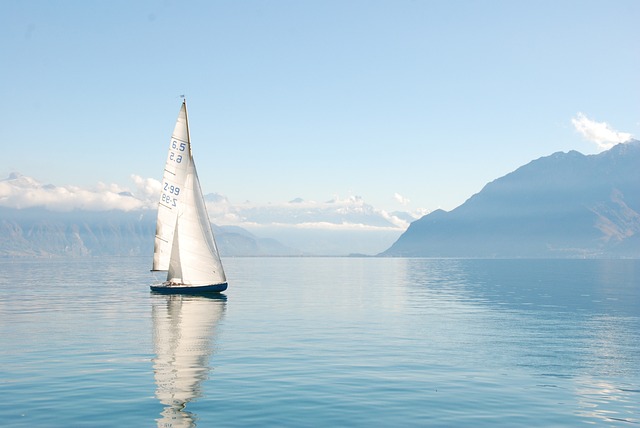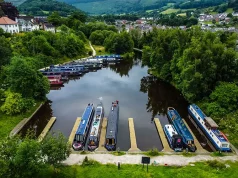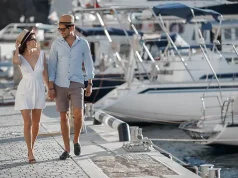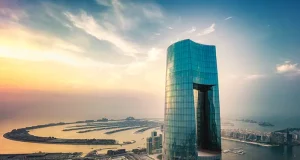
For every problem, there is a solution. True enough in human endeavours, much more with the aid of technology. Have you heard about hydrogeneration? Well, it is a well-invented power resource that impacts natural resources like water positively. It is a technology that produces electricity that can turn your sailing experience into a much more satisfying journey.
As you may know, sailing boats are mobilised by batteries nowadays, but their power is sometimes limited. It must be enhanced so electric outboard motors can work optimally on the water–hydrogenation fulfils this purpose. Let’s find out how it works.
What is hydrogenation?
Hydrogeneration is a renewable energy resource that utilises moving water to generate electricity.
On a large scale, it typically involves dams, and a certain process is being worked on. The hydroelectric dams turn the stored water inside the reservoir into mechanical energy, also called kinetic energy.
The kinetic energy produced is used to turn the turbine. Then, the generator turns the turbine’s mechanical energy into electricity. However, this phase undergoes several levels of processes.
Why choose it for your sailboat?

It is an energy-efficient power resource that empowers the battery’s lifespan. When in function, the battery recharges while sailing, which makes your travel more interesting.
The Importance
Hydrogeneration is a necessary form of technological advancement. It produces an inexhaustible energy resource for electricity production. Moreover, power production is readily available as long as the water cycle is at work. The best thing about it is being environmentally friendly. It reduces the demands for fossil fuels that add to the increasingly alarming climate change.
As a power resource, it is enormous due to the large and endless accessibility of bodies of water. Additionally, masses of water at high altitudes give off gravitational energy, which is also potential for more abundant power production. Indeed, hydro generation is a remarkable solution for electricity production and distribution. It can supply the energy demands of sailing boats, including the basic needs of billions of people worldwide.
How does hydrogenation work?
The integration of hydropower in the sailing boat system makes sailing experiences more convenient and efficient. When it enables the electric outboard motor, the sea travel achieves an extended runtime. Additionally, it makes sailing sustainable because of the powerful hydro generation function. There is a huge potential for limitless capabilities for electric outboard motors.
However, the produced electric power is of different wattage levels. It depends on the towing speed and the sailboat’s model system. For example, a 3 hp electric outboard motor may produce 330W at the speed of 10 knots. Nevertheless, this is not a concerning issue because you have a vast option to choose an electric outboard motor with a higher horsepower spec to increase the battery power banking potential.
Activation
The hydro generation on motors may activate when the position of the boat’s outboard is neutral, and the sailing is between 4 knots and 10 knots. In other boat model systems, the light indicator is on.
Power Generation
During hydrogeneration, the propeller of the electric outboard motor is stirred either forward or towards the reverse direction by the water. This situation triggers the process called electromagnetic induction. This scenario involves a battery management system (BMS). It is responsible for producing electricity that is used for battery recharging.
During the charging period, BMS is communicated by the system software, and it’s prompted to regulate power production. This BMS activity helps to get rid of battery overcharging cases. Also, while on hydro generation status, the control screen displays the level of energy produced, the propeller’s revolutions count per minute, and the time to complete the battery recharging.
Amazingly, when the battery charging reaches at least 90 per cent, this technology shuts off itself — in some cases, charging stops when the speed of the boat gets slowed or not enough.
In the case of a foldable propeller, the ignition of the motor is at a slow rate to gradually open it. Then, the centrifugal force and motor controller keep the propeller open. In the process, the motor controller handles the calculation of resistance and propeller revolutions per minute throughout the sailing period to prevent it from closing. But these tasks largely depend on the speed of the boat over still or rough water.
Conclusion
Hydrogeneration significantly impacts the performance of electric outboard motors while on the sea. Power production is highly sustainable and eco-friendly. Moreover, this technology is commendable for a variety of purposes. Electricity is essential energy in many aspects of life.
This need is reduced and well-addressed through hydro generation because of the constant availability of water resources. It keeps power production accessible anytime, providing a promising future not only for sailboats but in major aspects of human living.





